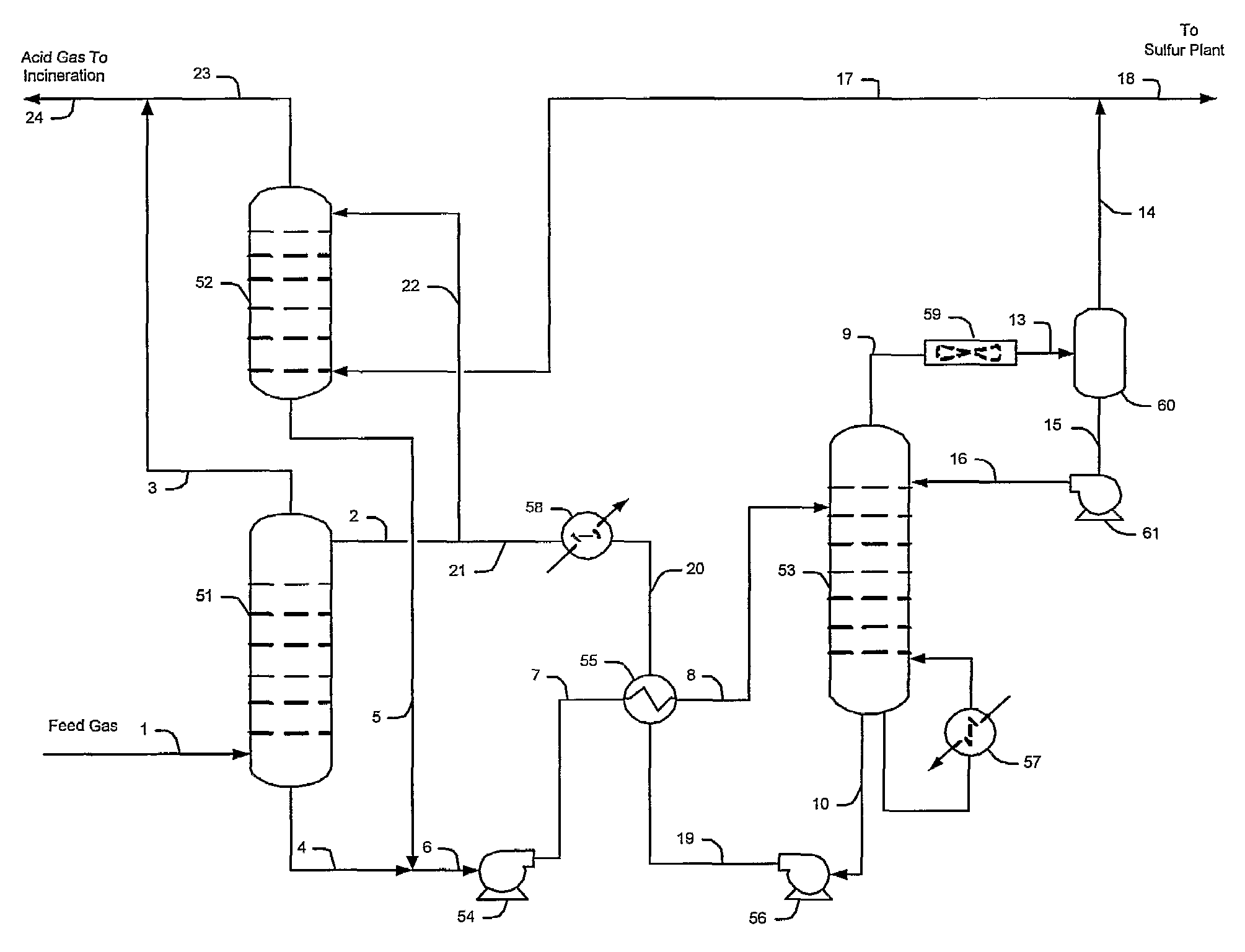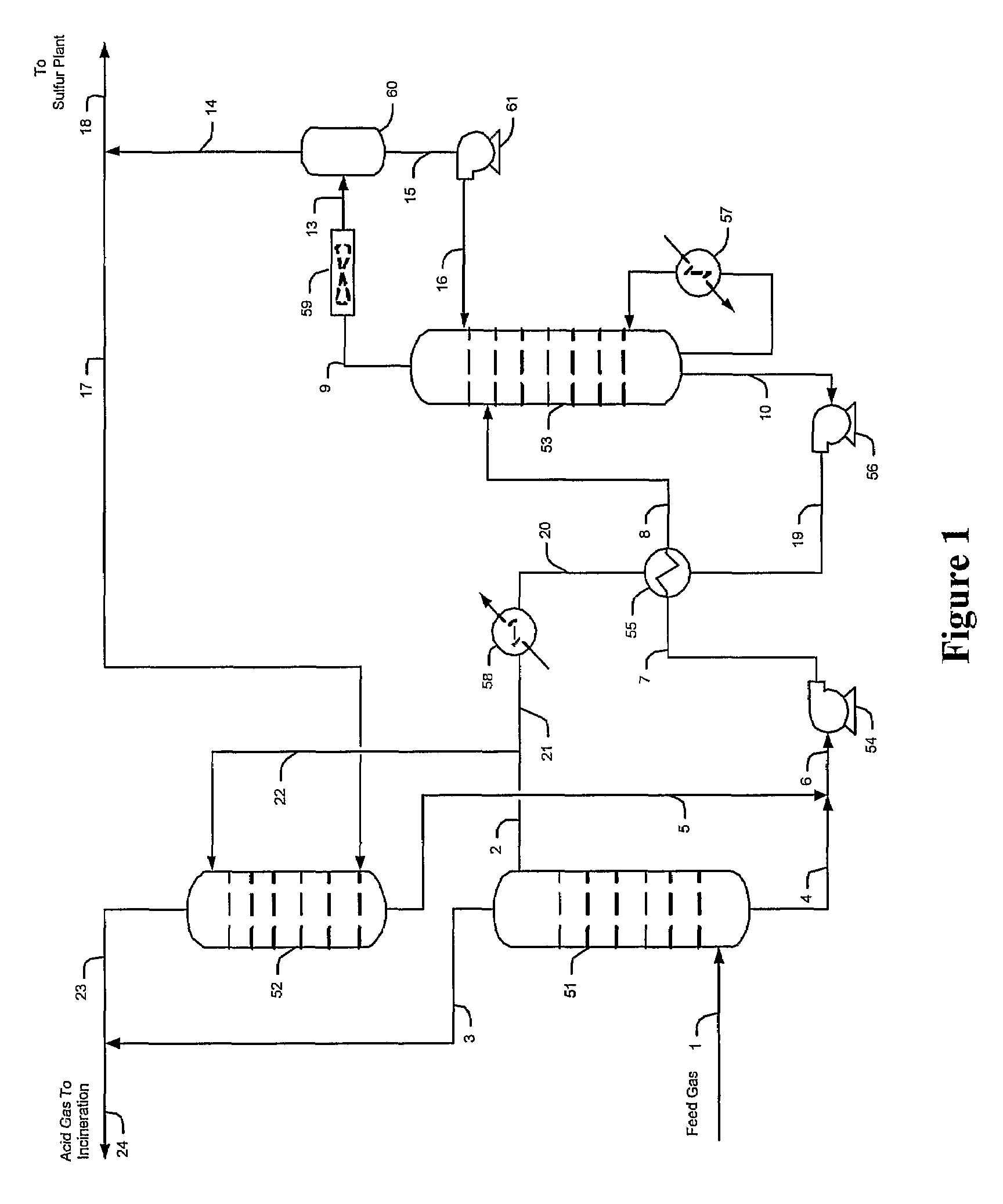Methods and configurations for acid gas enrichment
a technology of acid gas and configuration, applied in the field of gas processing and sulfur removal, can solve the problems of reducing the residence time in the claus furnace, difficult sulfur conversion, and claus plant, and achieve the effects of reducing equipment size and solvent circulation, and increasing hydrogen sulfide concentration
- Summary
- Abstract
- Description
- Claims
- Application Information
AI Technical Summary
Benefits of technology
Problems solved by technology
Method used
Image
Examples
Embodiment Construction
[0029]The inventors generally contemplate configurations and methods of selective hydrogen sulfide absorption and sulfur recovery from various gases comprising hydrogen sulfide and carbon dioxide, and especially from gases in which hydrogen sulfide is diluted. Contemplated configurations may also include an integrated sulfur plant (e.g., Claus plant) that receives a portion of an hydrogen sulfide-rich gas and that provides a tail gas to the plant from which the hydrogen sulfide is reabsorbed by a solvent while the carbon dioxide and other contaminants are rejected.
[0030]Most preferably, solvents used in conjunction with the teachings presented herein are selective towards hydrogen sulfide, and most preferably include tertiary amines, activated amines, sterically hindered amines, and / or complex amines. There are numerous such solvents known in the art, and all of the known hydrogen selective solvents are deemed suitable for use herein.
[0031]Contemplated configurations are particularl...
PUM
| Property | Measurement | Unit |
|---|---|---|
| outlet temperature | aaaaa | aaaaa |
| concentration | aaaaa | aaaaa |
| pressure | aaaaa | aaaaa |
Abstract
Description
Claims
Application Information
 Login to View More
Login to View More - R&D
- Intellectual Property
- Life Sciences
- Materials
- Tech Scout
- Unparalleled Data Quality
- Higher Quality Content
- 60% Fewer Hallucinations
Browse by: Latest US Patents, China's latest patents, Technical Efficacy Thesaurus, Application Domain, Technology Topic, Popular Technical Reports.
© 2025 PatSnap. All rights reserved.Legal|Privacy policy|Modern Slavery Act Transparency Statement|Sitemap|About US| Contact US: help@patsnap.com



